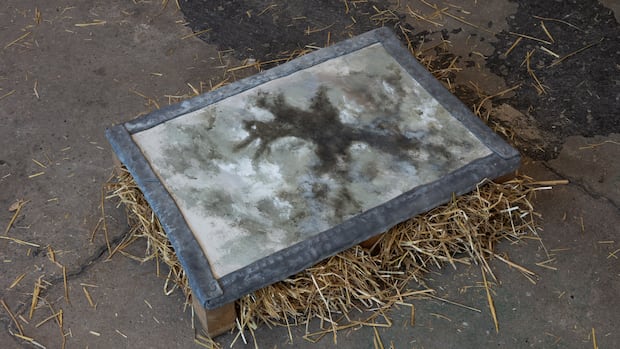In a small Hamilton gallery, visitors step off Barton Street and into the caves where painting began. Other artworks there recall the chapel walls of Renaissance Italy or the leafy ornaments of Gothic Europe. But none of it could be from anywhere but here and now.
Around the ad hoc exhibition space, Hamilton-based artist Gabriel Baribeau has prepared traditional frescoes from hyper-local materials, like foraged clay and mussel shells. He paints with mud, pine tar and industrial soot on recycled cardboard and scrap metal. He uses shipping pallets like stretcher bars.
After 10 years dedicated exclusively to oil painting, Baribeau found himself feeling disillusioned with the medium. “I was dissatisfied with the way paintings existed, so very detached from our reality,” he says.
The techniques and rules were well established. The materials all came out of jars and tubes you buy from the store. He felt like painting, as he practiced it, was “taking a lot for granted.”
He began to ask himself some very rudimentary questions, like: “How do we paint?” “Why do we paint?” Even, “What is paint?”
Baribeau wanted the process of art making “be more at [his] fingertips,” using the resources immediately available to him. So he started to retrace the evolution of painting back through the millennia, recreating its fundamentals — the pigments, substrates and sealants — from just the stuff around him, using mainly things he could find, forage and grow.
He gave himself a list of intentions that replicated some of the longstanding goals of painting. The works should be fixed, durable and protected from environmental wear. He wanted them to be structural, integrated with the architecture like the decorative applications of antiquity. And the materials, his list stipulates, should be “free if at all possible.”
The resulting exhibition is called Principles.
“I wanted to make stuff that felt foundational,” he says. From there, he would “see what poetry emerges.”
 An installation view of Principles by Gabriel Baribeau at 486 Barton St. E. in Hamilton. (LF Documentation)
An installation view of Principles by Gabriel Baribeau at 486 Barton St. E. in Hamilton. (LF Documentation)
One of the first works visitors encounter is an image of crashing waves made from ground limestone, zebra mussel shells and linseed oil on a dead solar panel. “I really wanted to paint with mud using my hands,” the artist says. “I tried to depict things like water, forest or cloud, these things that are like the mediums of imagination.”
Nearby, Baribeau has frescoed the topside of a hay bale — a “fun challenge,” he says. The milled mussel shells, gotten from Rock Point on Lake Erie, reappear as an analogue for marble, acting as both a whitening agent and a binder. The fresco shows a cloudy sky marked with a black rainbow made in industrial soot. “In that curve — I don’t know what it is, a sort of arc of light — an image emerged,” the artist says. “It became a thing. And that was, I felt, the end of the experiment.”
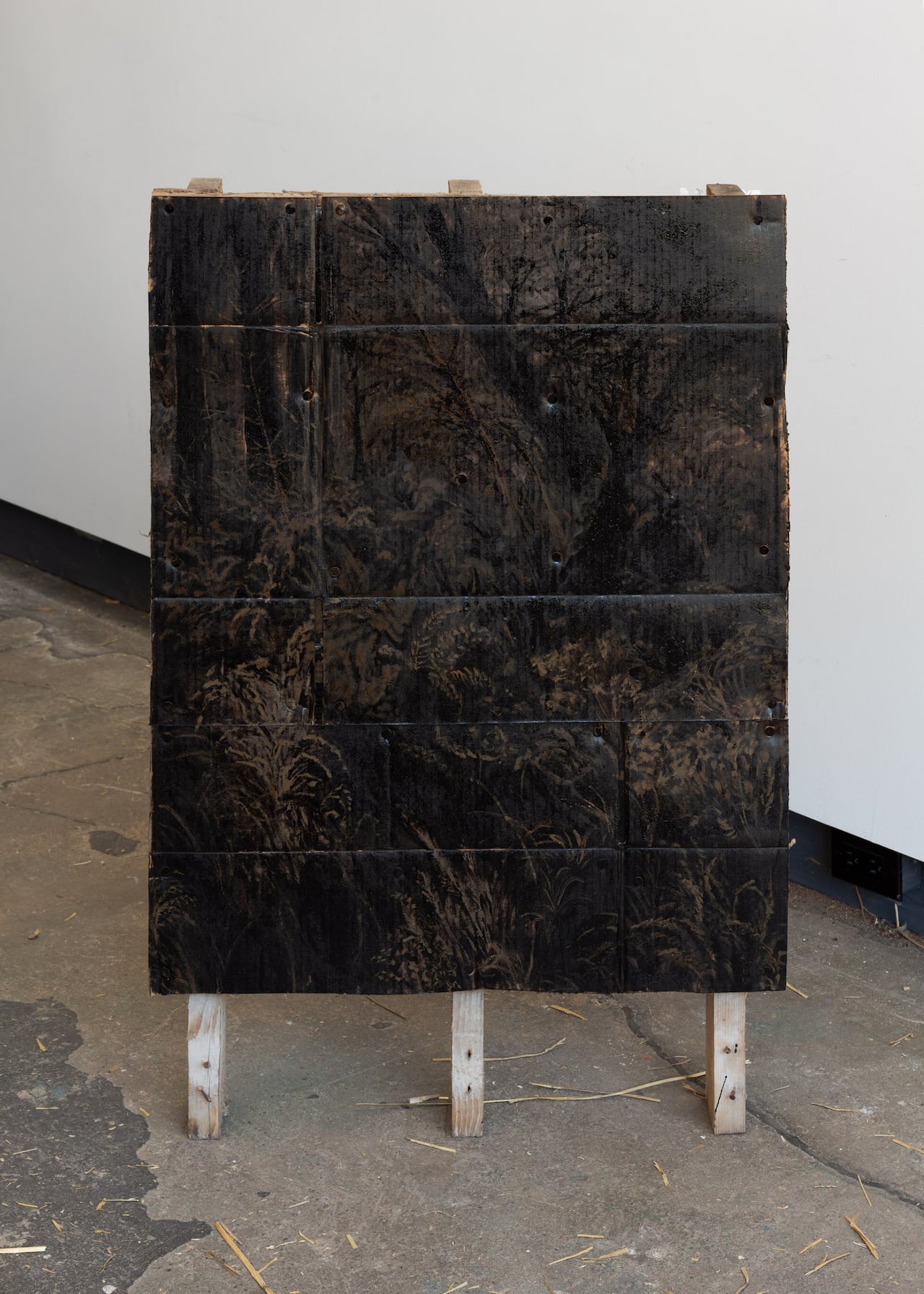 An installation view of Principles by Gabriel Baribeau at 486 Barton St. E. in Hamilton. (LF Documentation)
An installation view of Principles by Gabriel Baribeau at 486 Barton St. E. in Hamilton. (LF Documentation)
On large pieces of cardboard affixed to pallets and installed around the room, Baribeau has painted three forest scenes in pine tar and roofing tar. These less refined oil products draw a closer connection to the lands they’re extracted from than the stuff that’s squeezed out of paint tubes.
Baribeau included the material, he says, because “there was a purity complex happening.” He could have made a completely eco-friendly show, but he felt it was more earnest to acknowledge that some things that are toxic are also very useful — that is why they persist. Tar has a strong waterproofing ability, he explains. That’s why we continue to find oils in sealing, finishing and preservation treatments.
His notion of sustainability, rather, is to use and re-use the materials at-hand. It is demonstrated throughout the exhibition. “Something can be so much more green if you just didn’t buy the green thing. If you bought nothing instead,” he says.
Baribeau’s deconstruction and reconstruction of painting happens at multiple levels at the same time. While the materials hold one conversation about how we paint, the contents of the pictures explore what it is that we paint. Here, he appeals to the whims and wonders of human imagination.
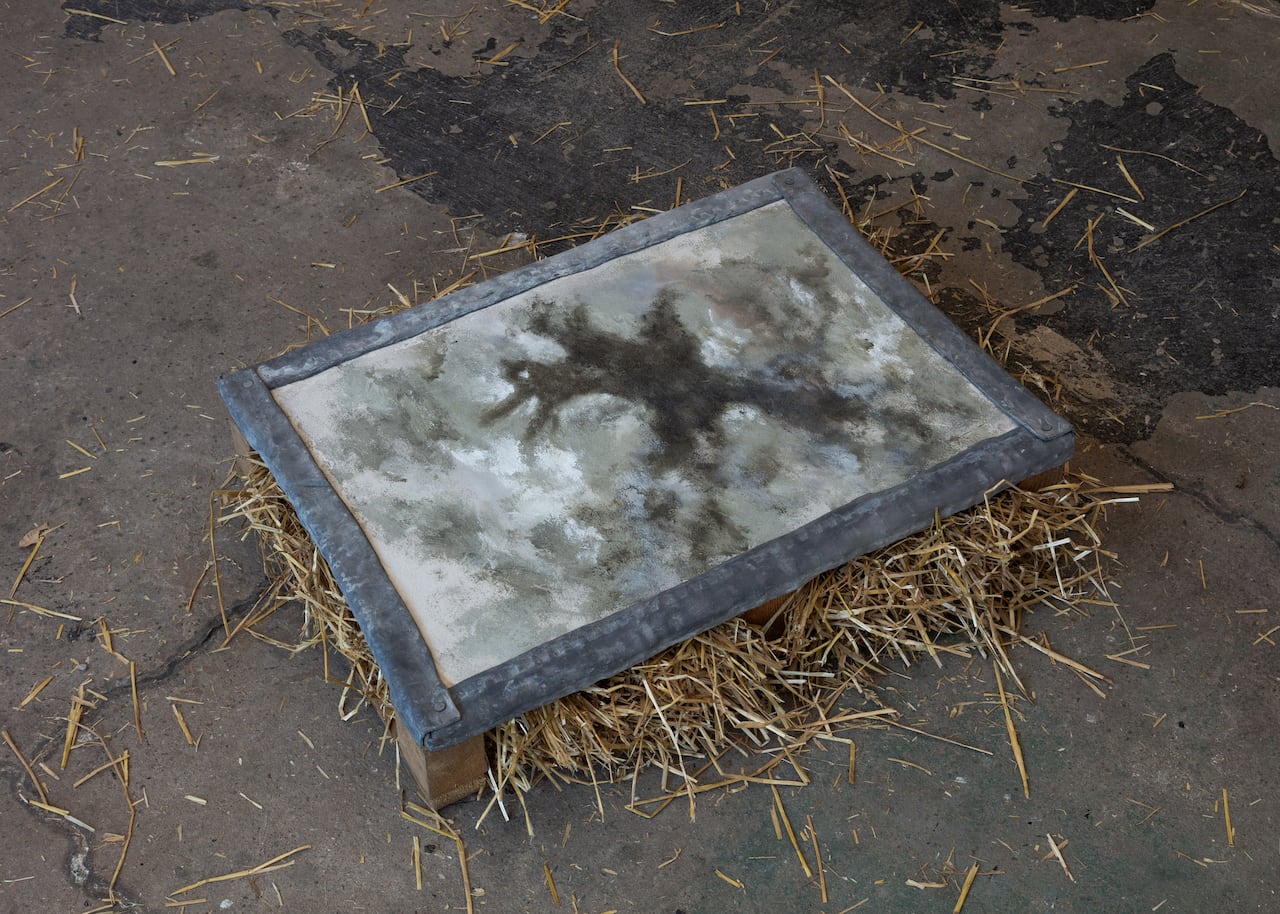 An installation view of Principles by Gabriel Baribeau at 486 Barton St. E. in Hamilton. (LF Documentation)
An installation view of Principles by Gabriel Baribeau at 486 Barton St. E. in Hamilton. (LF Documentation)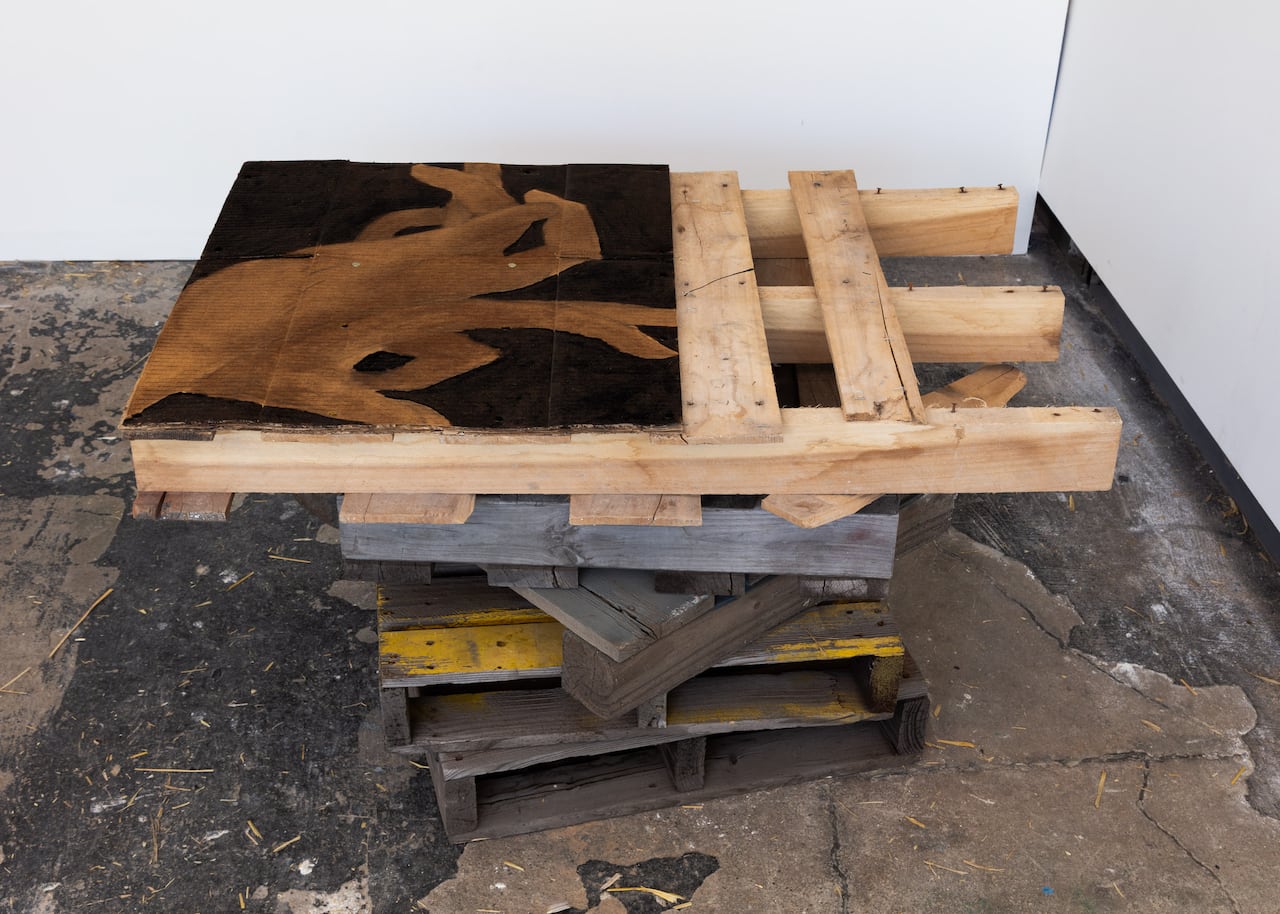 An installation view of Principles by Gabriel Baribeau at 486 Barton St. E. in Hamilton. (LF Documentation)
An installation view of Principles by Gabriel Baribeau at 486 Barton St. E. in Hamilton. (LF Documentation)
In what’s perhaps the centrepiece of the show, a two-part installation, the image of a rabbit, made from charcoal and foraged clay, appears in a sky scene, like a shape formed in the clouds. Across the room, a tar on cardboard painting shows a braid of hands making a bunny-shaped shadow puppet, as if they are projecting the picture onto the clouds. We have a natural ability, the work suggests, to invent and read images, if we only indulge it.
Elsewhere, Baribeau’s made a character resembling the mythical Green Man from a leaf cast in fresco plaster as well as an anthropomorphic bowl of fruit, riffing on the tradition of still life. Installed high on the wall are a pair of eyes painted on dome security mirrors — another reminder that one of painting’s primary goals is the joy of looking and imagining.
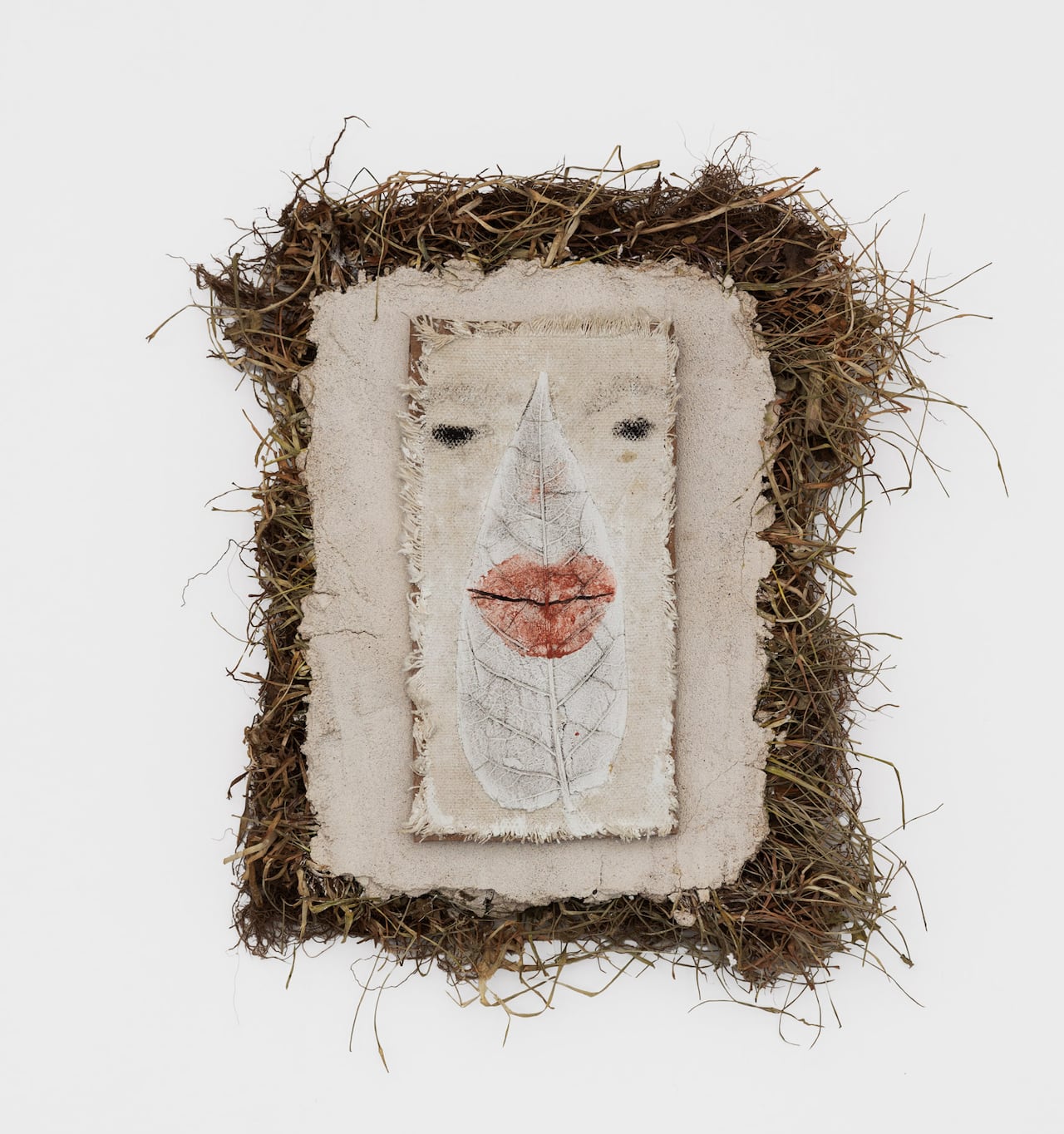 An installation view of Principles by Gabriel Baribeau at 486 Barton St. E. in Hamilton. (LF Documentation)
An installation view of Principles by Gabriel Baribeau at 486 Barton St. E. in Hamilton. (LF Documentation)
For the artist, this body of work has been about the “permission to be imaginative and to have an imagination with anything,” he says. Creativity shouldn’t be hampered by materials, traditions or other prescriptions.
“I think art’s deep connection to the picture in the square has done a disservice to people’s imaginations in many ways,” Baribeau says. “Because we do see rabbits in the clouds.”
Principles by Gabriel Baribeau is on view by appointment at 486 Barton St. E. in Hamilton until Oct. 18.

